Japandi Kitchen: Ideas and tips on how to adopt this style for your home.
Ideas and tips to adopt Japandi style design for your kitchen.
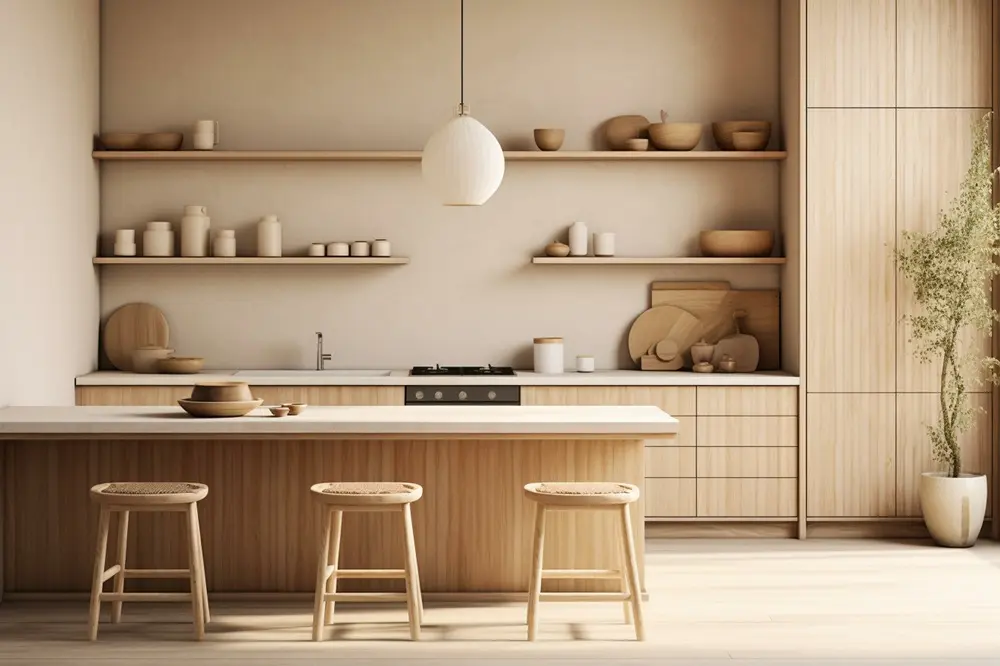
Japandi is an emerging design style that has become increasingly popular. We have introduced Japandi style elements in earlier articles. This time, we want to focus on the kitchen area to explore ways to create a Japandi Kitchen.
Past article links:
Hello, Japandi! What is Japandi? How can you create it?
Hello, Japandi. Ideas to create a Japandi style in your home.
What are the benefits of creating a Japandi style kitchen?
Japandi-style interior design uses a minimalist approach to decor and furniture, emphasizing simplicity, natural materials, and a neutral color palette.
You may have wondered how to exactly integrate it with your kitchen space, which is always a challenging area in the house to match well with a particular style. However, once Japandi essence is seamlessly intertwined in this vital space, it is not only aesthetically pleasing but also helps create a practical, highly functional workspace. Moreover, a clutter-free Japandi kitchen promotes ease of maintenance and adheres easily to its style. Join us as we explore practical insights and tips to transform your kitchen into a Japandi-inspired tranquil space.
How can the elements of Japandi design be incorporated in your kitchen?
1. Keep to a minimalist setting while considering work efficiency.
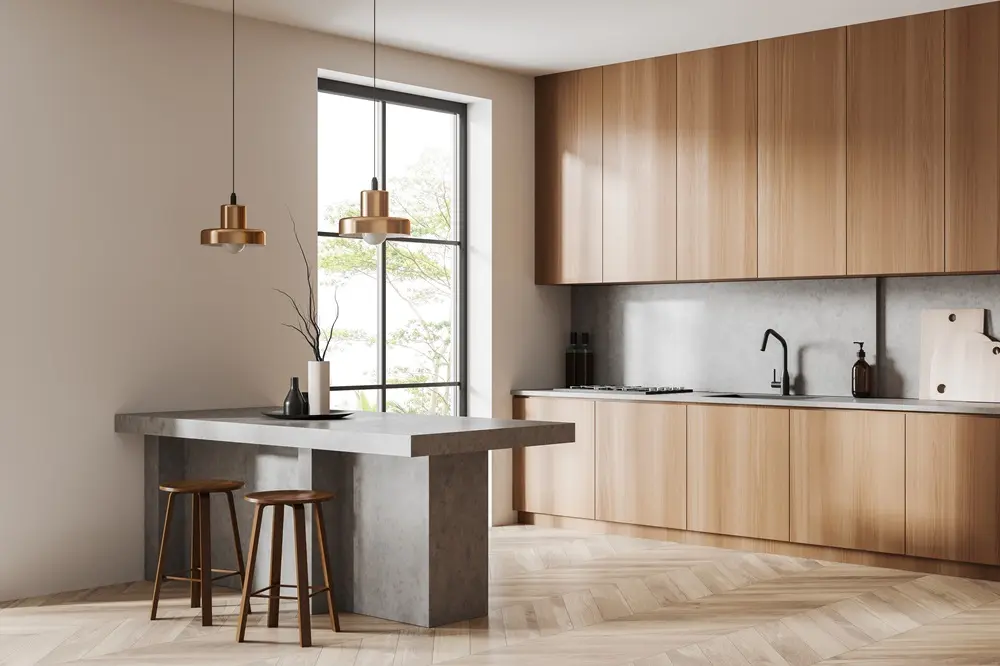
Simple but elegant Japandi design favors clean lines and a clutter-free sense of space. Try to select cabinetry, furniture, and appliances with straight or simple curved lines, minimum decoration and the least visible handles and buttons.
The Kitchen is one of the easiest areas in the house to accumulate clutter due to its frequent use and numerous cooking items. The basics of storage for Japandi style are hiding utensils and appliances as much as you can in order to emphasize simplicity and maintain a tidy kitchen. If you decide to display items on open shelves, keeping consistency in size, shape and material can help create an organized appeal. If your kitchen space is limited, it would be prudent to select items appropriate to what your cabinets can hold.
2. Choose neutral color.

Japandi's color palettes mainly consist of warm muted colors, such as beige, off white, gray, and soft earthly colors like brown and dark green. Kitchens with especially large furniture such as cabinets and a dining table, should keep a neutral color scheme to enhance a calming and serene atmosphere. Mind that strong intensely colored tableware or appliances can overwhelm or even visually disturb a Japandi style house. If using accent colors to add character to the kitchen, balance is a key; use these colors selectively and thoughtfully. Black accents often match well with natural Japandi styles, particularly with specific furniture like dining chairs and lighting equipment.
3. Make natural material items part of the kitchen.
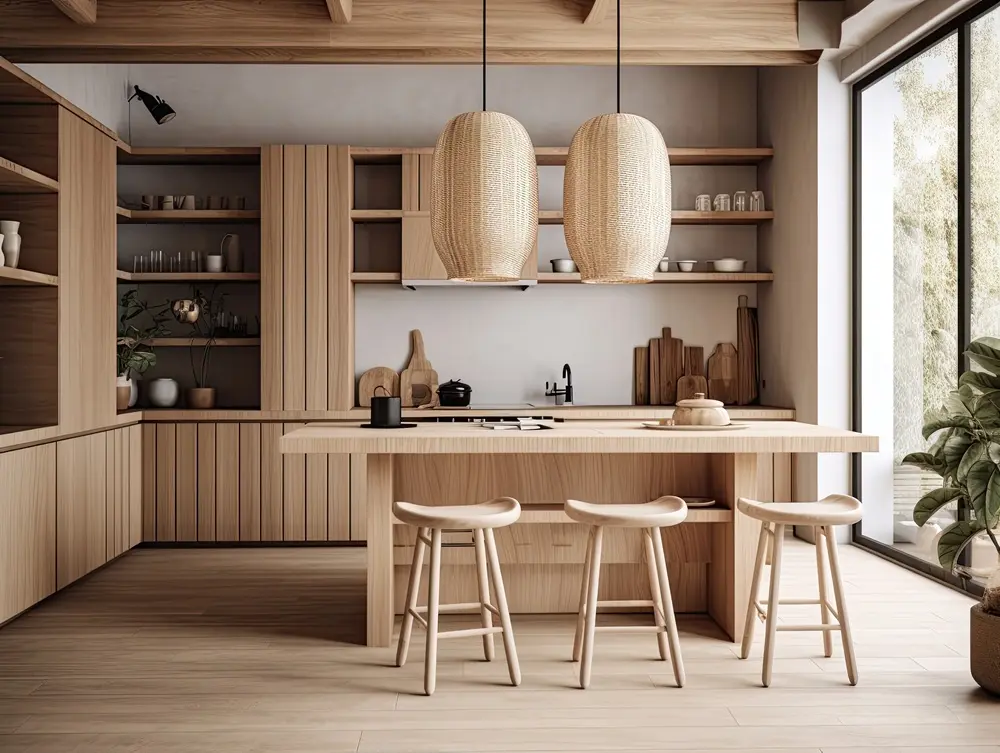
Japandi style values natural beauty. Integrating natural materials like wood, bamboo, stone, and other organic materials into the kitchen design help to contribute create a warm, inviting, and cozy cooking space. Natural materials can be adopted from countertops and cabinet doors to small accessories including utensils and kitchen ware. Ceramic and clay objects contain unique textures and earthy tones that add an artistic touch to the kitchen. Another way to bring a touch of nature is by setting some indoor plants in the kitchen area.
4. Pay attention to the lighting.

Natural light is essential for Japandi style and helps to connect the outside world to the interior. Maximize natural light by keeping windows unobstructed. Instead of heavy drapes, consider sheer curtains or blinds of light color that allow in light. But it may be challenging to secure plenty of natural light sources in a kitchen with limited space. In that case, a sizable mirror can reflect the available light and help make the space appear larger. At night, ambient lighting is necessary. Select soft and diffused lighting.
Examples of effective Japandi-style kitchen items.
1. Simple cabinet handles
 Look for knobs and handles with clean lines and simple shapes. Minimalistic designs without ornate details or attention-drawing colors and materials work well in a Japandi-style kitchen. Ditching the handles completely is also an option.
Look for knobs and handles with clean lines and simple shapes. Minimalistic designs without ornate details or attention-drawing colors and materials work well in a Japandi-style kitchen. Ditching the handles completely is also an option.
2. Handcrafted plates with neutral colors
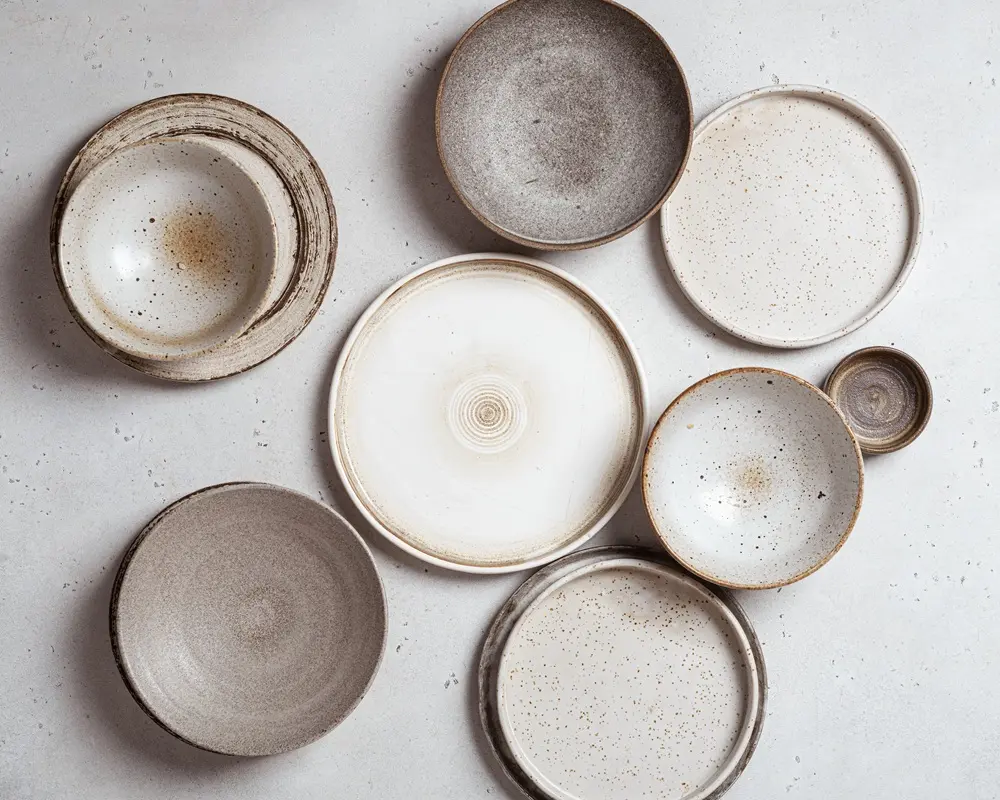
Handcrafted items always add rustic charm to the space. Japanese modern dishes often have soft colors as well as natural rough texture.
3. Rattan items
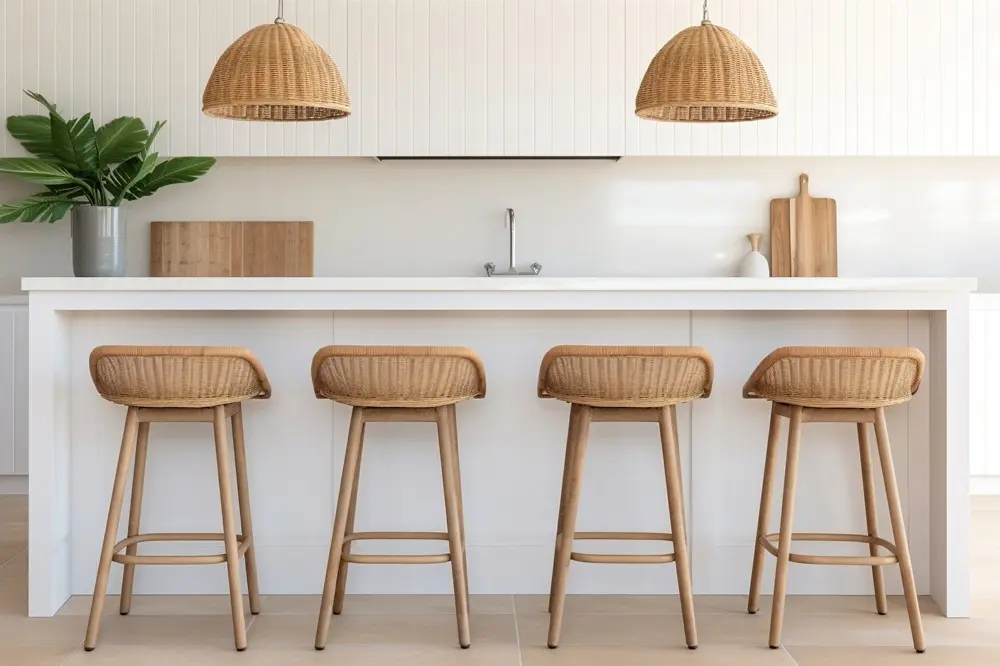
Unique natural materials like rattan are suitable for a refreshing looking kitchen. Rattan lightshades or a rattan fruit bowl help to provide a Japandi vibe.
4. Plants
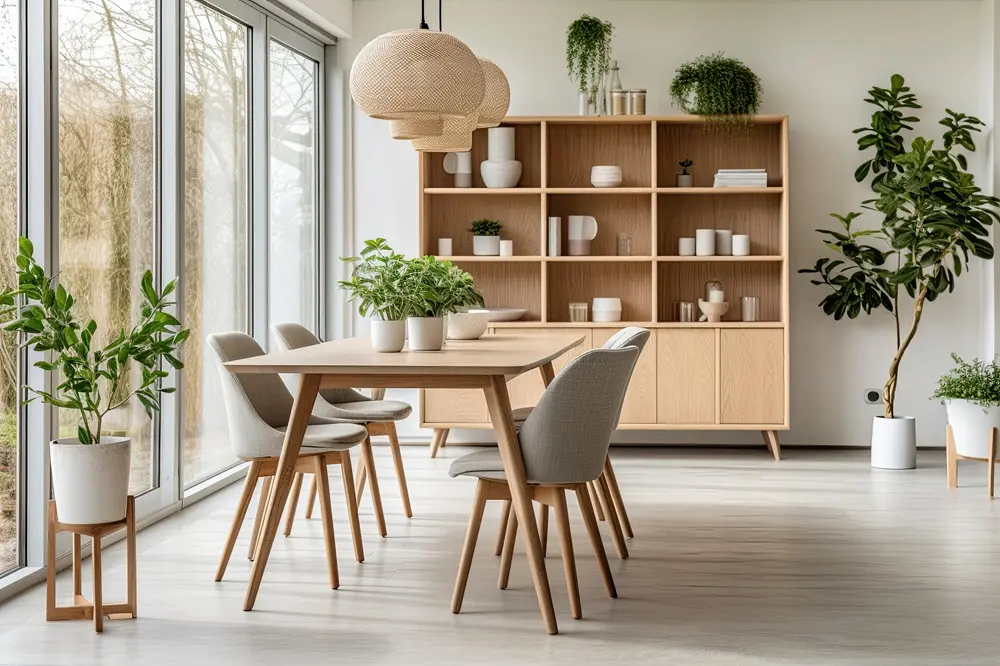
Fresh green colors can provide a natural accent, enhancing the simplicity of Japandi style. You can set out a small pot with herbs, some bamboo stalks, or a variety of your favorite indoor plants. Greenery works well with natural furniture.
5. Pendant light
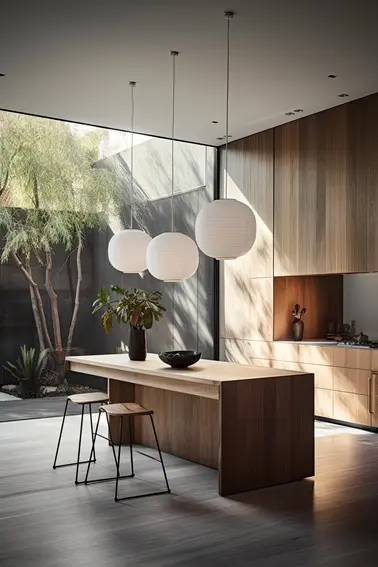
Soft light can help create a relaxed state of mind in the evening, making the house feel cozy and comfortable. Pendant lamps can gently illuminate certain desirable spots, while the slender cords provide an elegant vibe. Consider natural materials like paper or fabric shades that emit a soft glow.
We hope that with these tips, you can now try transforming your own kitchen in a Japandi manner that matches your taste and life style. Remember, the essence of Japandi design lies in simplicity. It should maintain balance and harmony.

